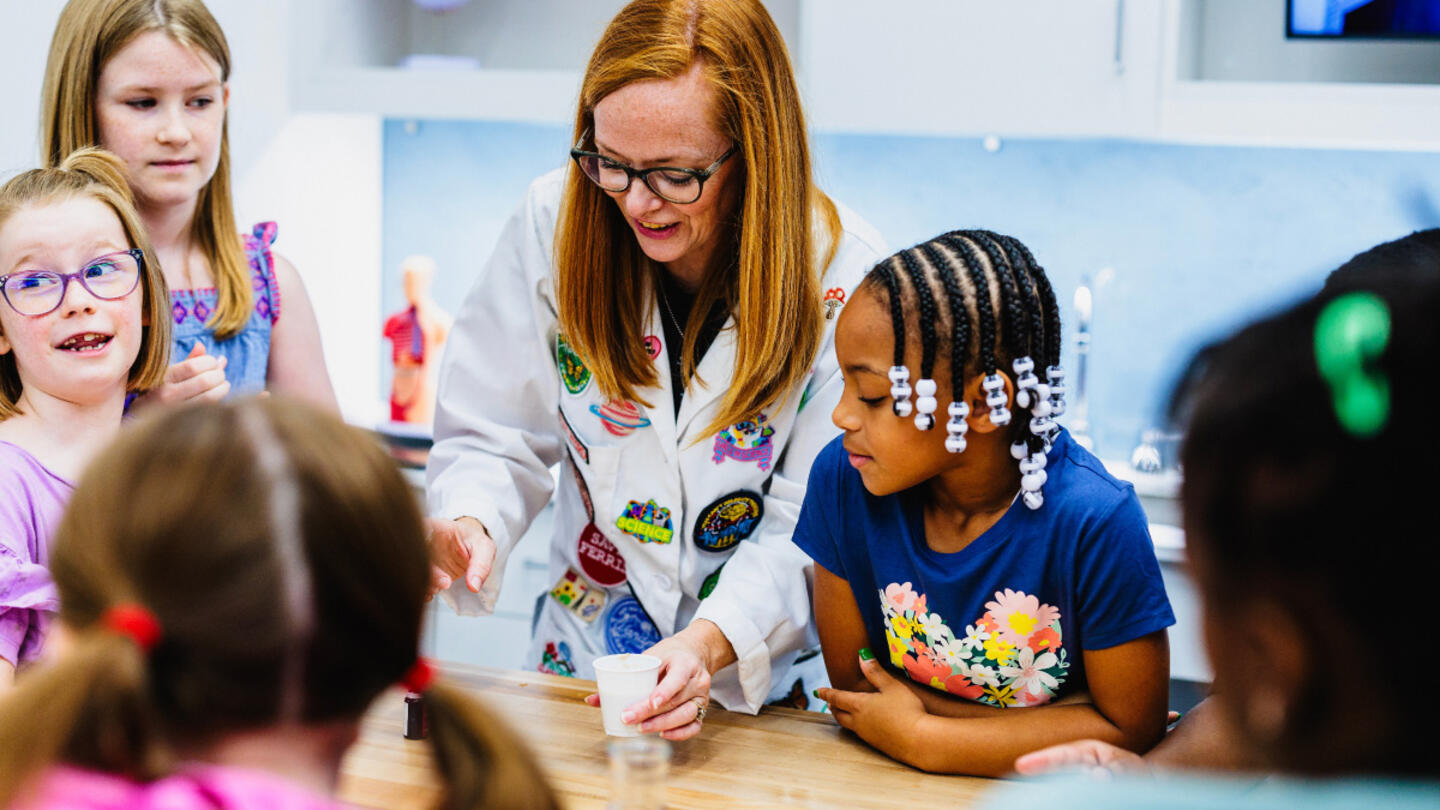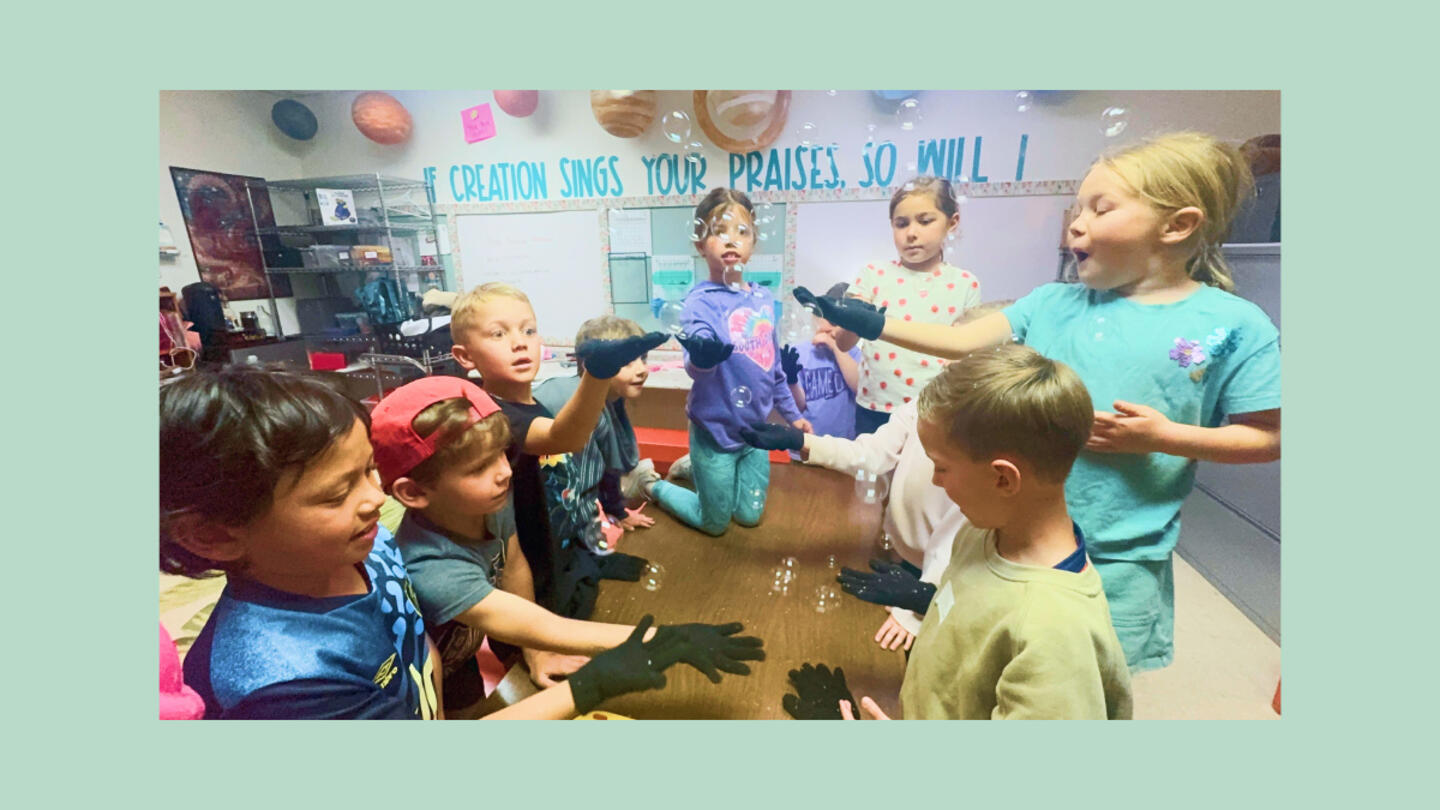These days, mentioning “school choice” in a public setting is bound to turn heads. Even terms like “education reform” or “education freedom” are so loaded with conflicting opinions they can ignite hours of debate over the implications of allowing families to choose their own schools.
Meredith Olson, president of VELA, a community of over 3,500 innovative education founders, wants to move the conversation away from institutions and buzzwords like choice, freedom, and reform.
For her and thousands of education entrepreneurs, it all boils down to one simple idea.
“This is about owning your education,” she said. “Every family and educator envisions a meaningful education that is personal, purpose-driven, and a true reflection of their values.”
She explained that traditional education — commonly recognized as a government-run, brick-and-mortar school that students attend five days a week — works well for many people. This brand of education is reliable, efficient, and consistent, but it’s not the sole path. Thanks to technology and entrepreneurial parents and educators, students and families now have many more options for crafting learning experiences that fit their unique needs and vision.
Olson likened education to taking charge of your health journey, noting, “Your doctor doesn’t own your health journey — you do. Despite the United States having one of the best health care systems in the world, many people seek alternatives, such as functional, integrative, or concierge medicine. It’s not that these things are at odds with one another. It’s about choosing the future you want for your health.”
Just as individuals explore alternative health care options to align with their personal goals, families and students should be free to create an education that reflects their values and aspirations.
“The teacher doesn’t own your education,” Olson said. “The school doesn’t own it for you. You have to take deep ownership and responsibility for your learning and your development as a human. There’s no right or wrong here. It’s just about each student or family finding that good fit.”
While many students, educators, and parents today are exploring education models that break from traditional norms, the novelty of these approaches often raises questions and uncertainties about their value and how they stack up against conventional methods.
We spoke with Olson to explore some of the challenges and concerns of newcomers when it comes to unconventional education models. Having met with thousands of parents and families exploring these options, Olson shared insights into the common concerns, misconceptions, and potential benefits that families encounter when transitioning to innovative education models.
(Olson’s insights have been edited for clarity and length.)
Challenge #1: Without standardized regulations, how can parents determine the true quality of a school or educational experience?
Innovation: Parents rely on trusted networks, community recommendations, and personal values to assess the fit and effectiveness of schools.
Parents are best positioned to make decisions about their children’s education when they are equipped with information. This may include data and observations from multiple sources, such as traditional assessments, education technology, daily behavior and interactions, and feedback from peers and adults.
The solution to this challenge lies in empowering parents with the resources to make informed decisions — not expanding bureaucratic oversight.
Each family has a distinct vision for education, one that reflects their values and purpose. When choosing a school or learning experience, they consider more than just academics. They evaluate the quality, character, and reputation of school founders, as well as fit with the school culture and whether their children will thrive in that environment.
Parents actively seek and share information about educational options through trusted networks — other parents, community members, and former teachers. Much of this happens via phone conversations, emails, word of mouth, and social media.
VELA’s founder network includes about 30 community connectors across the country who work with families and founders in specific regions. Their role is to help parents find the best educational fit within their community.
In a few weeks, we’re launching a technology platform to connect families directly with founders in the VELA network. This tool will make it easier to build the meaningful connections already happening, offering a simple, on-demand way to connect.
-
Brettani Shannon is an ecosystem builder in the VELA network. Her nonprofit, Options for Education, helps families in Grants Pass, Oregon, find the right learning experiences for their children.
Challenge #2: Critics argue nontraditional education models lack accountability and government oversight. How do these models keep educators accountable for students’ learning outcomes?
Innovation: Accountability is rooted in relationships between families and educators, with success driven by measurable outcomes tailored to each student.
We get this question all the time. Accountability is essential but must be in the right place. It should be rooted in the relationship between the program and the families it serves.
We believe in a market-driven approach. This means schools are accountable to families, not the government or outside interests. Founders of sustainable models know their success depends on positive outcomes and experiences for every student and strong relationships with families. This organic form of accountability is often more effective than top-down regulation because it drives educators to innovate and build lasting trust.
Instead of relying solely on traditional forms of assessment — like norm-referenced tests, statewide education benchmarks, or school rankings — founders in the VELA Founder Network define success based on the unique needs of their communities, measuring learner and program outcomes through personalized and context-driven metrics. They adopt a comprehensive view of learner success and use a range of assessment tools, including mastery-based assessment, adaptive ed-tech tools, and portfolio reviews that align with the individual learning journeys of students.
These diverse methods allow founders to track progress in ways that best serve their learners. Many also use standardized tests, but their goal is to provide families with valuable insights, not to satisfy external reporting requirements.
VELA recently published a report about how founders of unconventional models define and measure learner outcomes.
It’s important to note VELA does not assess learner outcomes. That’s not our role. Accountability should come directly from the families that choose these educational models through feedback, ongoing communications, and results that meet their children’s needs.
-
One way Rogue Christian Academy in Grants Pass, Oregon, stays accountable to parents is through a monthly in-person open house, where all the teachers and administrators are available to parents and students.
-
Parents at unconventional schools sometimes worry about their children’s learning progress. Find out how Verdi EcoSchool founder Ayana Verdi addressed these concerns, starting with helping parents learn how to voice them effectively.
-
At Limestone School in Lawrence, Kansas, first- and second-graders designed homes for people experiencing homelessness. Then, the community helped build them. The students didn’t stop at creating the plans — they contributed labor by landscaping and painting. How’s that for a meaningful learner outcome?
Sign up for Stand Together's K-12 newsletter and get stories, ideas, and advice from changemakers who are transforming education across the country.
Challenge #3: Are these nontraditional options accessible and available to every child in America? Or only for a select, elite few?
Innovation: While scaling is a challenge, entrepreneurial educators are meeting the rising demand.
Educators, parents, and community leaders are exercising their entrepreneurial muscles to respond to the surge in demand. Since 2019, VELA has grown from a few courageous founders to more than 3,500 innovators serving millions of kids, and we’ve received more than 8,000 applications for small grants.
Nontraditional private and home education [options] have been steadily growing for decades. However, that growth has accelerated recently. It’s driven by several enabling factors:
- Technology advances: Technology is a foundational driver behind this shift. Traditional schools rely on large-scale infrastructure with subject-matter experts as teachers and comprehensive services to meet diverse needs, but technology is transforming this model. It has decreased costs and expanded access to high-quality, personalized academic content and operational tools.
- Demographics: Parental age is increasing, and families are having fewer children. In the U.S., first-time fathers are now typically over 30, and first-time mothers are almost there. By the time children reach kindergarten, parents are in their mid-30s, with fewer kids — usually one or two per family.
Parents are all in. They’re older, more mature, more established in their careers and home lives, and better equipped to invest time and financial resources in their children’s education.
There are also some interesting demographic effects happening with grandparents. Baby boomer parents are well-resourced financially compared to other generations, and they are sharing not only their time but also their financial resources to help their kids and grandkids.
- Pandemic school closures and culture wars: Since 2020, pandemic school closures and education culture wars have shattered norms and opened doors to new possibilities in education. Parents let go of their anxiety about trying something new because they had to. Then they saw the culture wars being played out in traditional schools, and they thought, “You know what, this isn’t working. I’m open to trying something different.”
Together, these changes are creating a pivotal moment in the evolution of education. Demand for low-cost private and homeschool variants exploded during the pandemic. It continues to grow virally through word of mouth and enabled by social media.
While serving every child in America won’t happen overnight, the steady progress sparked during the pandemic is poised to continue.
-
Soar Academy began in an attic with just seven students. Today, it serves 200 full- and part-time students at its main campus in Augusta, Georgia. With plans underway for a second location in Oklahoma, founder Kenisha Skaggs is increasingly sought after by educators across the Southeast for her expertise in creating learning environments tailored to neurodivergent students.
-
Thirteen years ago, Ana Maria Bagnuoli felt isolated when she began homeschooling her kids. Today, she and her husband run TransitionED, a nonprofit supporting families transitioning to homeschool. For three years, they’ve hosted Educa Por Diseño, an international Spanish-language homeschooling conference.
Challenge #4: Don’t traditional schools spend more per student than low-cost alternatives? Why would anyone besides the wealthy pay for private education when public schools are available at no cost?
Innovation: More money doesn’t always mean better education. Nontraditional models often skip the broad social services offered by traditional schools, focusing instead on personalized learning with better outcomes.
The surprising thing about this movement of low-cost education alternatives is that it’s almost entirely a low- and middle-income phenomenon.
Families are committed to a quality education for their kids. Despite differing points of view about whether families should invest in their children’s education, it’s happening. Low- and middle-income families are actively investing in their children’s education whether anyone in power thinks they ought to or not. They’re just doing it at a much lower price point.
Traditional schools usually spend more per student. In public schools, that spending supports a full-service education and social service model, which includes transportation, nutrition, counseling, and administrative overhead.
VELA founders concentrate on the services that matter most to families, such as personalized and community-driven education. This approach results in higher levels of parent satisfaction and student success, often surpassing what is achieved in traditional settings and at a lower cost.
Parents want affordable alternatives that align with their values. Over 90% of VELA founders serve low- and middle-income families, with 70% of revenue coming from tuition and fees. Median tuition is $450 per month, and enrollment grows 25% annually. Less than 10% of founders rely on government funding, innovating with space, labor, and time to meet the demand and keep costs low.
Founders also offer flexible pricing models — things like sliding scales and barter systems — to ensure education remains accessible to families.
-
Bramblewood Learning Community in Pennsylvania is a hybrid co-op located on a farm. It has a two-day-a-week program with a volunteer-based tuition structure. Parents who volunteer one day a week get a 50% discount on tuition, which is capped at $230 a month.
Time to replace ‘school choice’ with ‘owning your educational journey’
As the education landscape continues to evolve, Olson’s vision represents a fundamental shift in how we approach the question of individualized learning. It’s no longer about school choice; it’s about empowering families and educators to take ownership of their educational journeys.
This movement is unlocking new possibilities that go beyond the constraints of traditional schooling. Olson’s insights reveal a future where education is an active, collaborative journey that aligns with each individual’s unique needs, talents, and aspirations.
It’s a future where learning is not just a means to an end but a lifelong journey of self-discovery and empowerment.
“The beauty of our society is that what I want is different than what you want, and maybe for each of my kids, it’s different,” said Olson. “Why can’t we find solutions that work for each of us as individuals?”
VELA, as part of the Stand Together community, supports everyday entrepreneurs who are boldly reimagining education.
Learn more about Stand Together’s education efforts and explore ways you can partner with us.

This colearning space has the potential to bridge the divide between public and private education.

New Johns Hopkins data shows homeschooling’s recent surge has transformed the education landscape.
Step 1: Find the best learning environment for your child. Step 2? Figure out how to pay for it.

Here’s what happens when AI replaces teachers.
